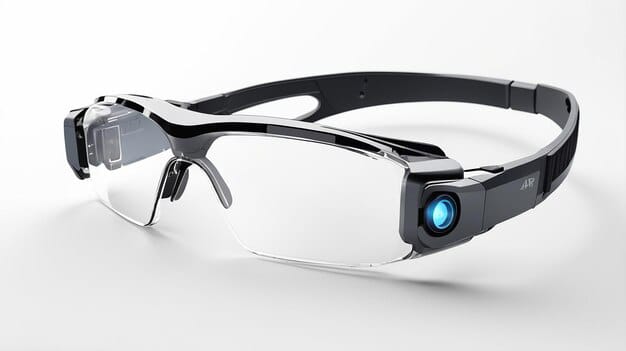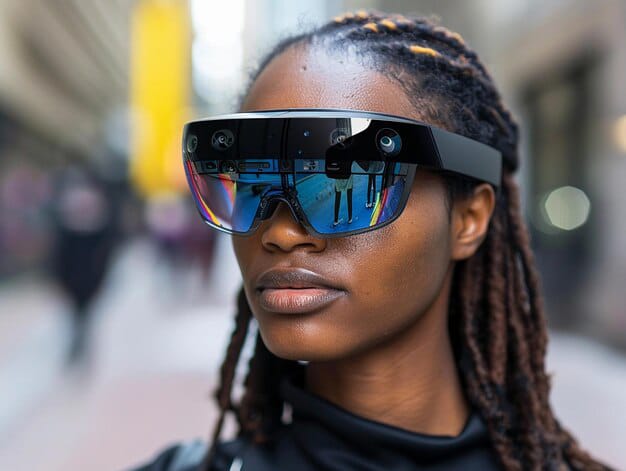In recent years, the eyewear industry has experienced a significant transformation with the emergence and growing popularity of smart glasses. These high-tech, wearable devices blend fashion with cutting-edge technology, offering users enhanced vision capabilities alongside a range of digital functionalities. As the world becomes interconnected, and consumer preferences shift towards convenience and multifunctionality, smart glasses are positioned to revolutionise not just how we see, but how we interact with the world around us. This article explores how smart glasses are reshaping the traditional eyewear industry, their potential applications, and their challenges in gaining widespread adoption.
The Evolution of Smart Glasses
Smart glasses, which integrate technology like augmented reality (AR), virtual reality (VR), and heads-up displays, have evolved from niche tech gadgets into products with the potential to serve mainstream purposes. Early models, such as Google Glass, introduced the concept of eyewear with digital capabilities. Although Google Glass did not become a commercial success, it laid the groundwork for subsequent iterations of smart eyewear.

Today, companies like Apple, Facebook, and Snap Inc. have entered the market, developing next-generation smart glasses that incorporate AR, cameras, audio, and touch control. For example, Meta’s collaboration with Ray-Ban on the Ray-Ban Stories smart glasses provides wearers with built-in cameras for taking photos, videos, and touch controls for interacting with social media. This merging of fashion with tech innovation has made these glasses go from practical to stylish and appealing to fashion-conscious consumers.
Applications of Smart Glasses
Smart glasses have a wide range of applications across different industries. Healthcare, for example, these glasses equipped with AR and AI capabilities can help surgeons by overlaying digital information, like patient vitals, onto their field of view during surgery. This helps doctors make quick, informed decisions without having to glance away at a monitor. Additionally, these devices are useful for remote consultations, allowing doctors to assess patients in real-time visually.
In manufacturing and logistics, smart glasses with AR overlays can improve worker efficiency by displaying instructions, checklists, or inventory information directly in the worker’s line of sight. This hands-free access to information speeds up workflows and reduces errors. Similarly, the retail sector is beginning to experiment with smart glasses that allow shoppers to visualize how products, such as furniture or clothes, would look in their homes or on their bodies before making a purchase.

For consumers, smart glasses have everyday applications like navigation, fitness tracking, and enhanced media experiences. With AR capabilities, wearers can get real-time directions displayed right in front of them while walking or driving, making it easier to navigate unfamiliar areas. Fitness enthusiasts can also benefit from smart glasses that display real-time workout stats, like heart rate and distance travelled, without the need to look down at a smartwatch or phone.
Disrupting the Traditional Eyewear Industry
The influx of smart glasses is disrupting the traditional eyewear industry, which has historically focused on providing vision correction and style. With these glasses, eyewear is no longer just a tool to improve vision but also a digital interface to the world. This shift challenges traditional eyewear manufacturers, who must adapt to new consumer expectations for multifunctional, tech-integrated products.
Major eyewear brands are partnering with tech companies to bridge the gap between fashion and technology. For instance, the Ray-Ban collaboration with Meta marks a significant turning point in the industry, showing that iconic eyewear brands are embracing and leading the charge in smart eyewear development. Companies that fail to adapt may struggle to keep up with the competition, as consumers increasingly expect their eyewear to serve a broader range of functions beyond vision correction.

Challenges and Concerns
Despite their promise, smart glasses face several challenges that could hinder their widespread adoption. One key concern is privacy. Smart glasses with built-in cameras raise questions about consent and surveillance, as it becomes harder to detect when someone is recording. Regulatory frameworks will need to address these privacy issues to prevent misuse.
Additionally, the high cost of these glasses compared to traditional eyewear could be a barrier to mass adoption. While prices may decrease as the technology matures, the current price point limits access for many consumers.
Lastly, there are technical challenges, such as battery life and user comfort. Many glasses have short battery lives due to the power demands of advanced features, and some early models have been criticized for being bulky or uncomfortable to wear for long periods.
